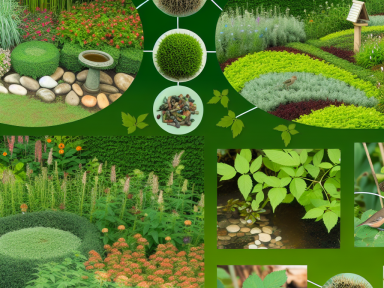Understanding the Needs of Wildlife
When designing a garden to attract wildlife, it’s crucial to understand the specific needs of different creatures. Birds, butterflies, and small mammals require diverse habitats, sources of food, water, and shelter.
Food Sources
- Birds: Plant a variety of berry-producing shrubs such as elderberries, serviceberries, and blueberries. Consider native plants which often produce seeds and fruits that local bird species prefer.
- Butterflies: Incorporate nectar-rich flowers that bloom in different seasons. Examples include butterfly bush, milkweed, and coneflowers. Don’t forget host plants like parsley, dill, and fennel for caterpillars to munch on.
- Mammals: Many small mammals enjoy nuts from oak and hazelnut trees, as well as fallen fruit from fruit trees.
Water Sources
Providing a reliable water source is vital for attracting wildlife. Here are some options:
- Bird Baths: Select shallow bird baths with sloped edges. Clean and refill them often to ensure fresh water is available.
- Ponds: A small pond can cater to birds, amphibians, and insects. Add rocks and logs around it to create perching and hiding spots.
- Water Features: Drippers, misters, and fountains not only attract wildlife but also add soothing sounds to your garden. Ensure they have landing spots and gentle water flow.
Shelter and Nesting
Creating places for wildlife to hide, rest, and raise their young is a key aspect of a wildlife-friendly garden.
- Bird Houses and Nesting Materials: Install birdhouses suitable for the species you want to attract. Provide nesting materials like dry grass, twigs, and even pet fur.
- Dense Shrubs and Trees: Dense plantings of evergreens and shrubs such as holly and privet offer shelter from predators and harsh weather.
- Ground Cover and Rock Piles: Use logs, rock piles, and leaf litter to create habitats for insects and small mammals. These elements replicate natural forest floors.
Choosing Native Plants
Incorporating native plants is one of the best strategies for attracting local wildlife. Native plants are adapted to your local climate and soil, requiring less maintenance and providing the best nutrition and shelter for native species. Conduct research or consult with a local nursery to determine which plants are native to your region.
Minimizing Pesticide Use
Pesticides can harm or kill beneficial insects and other wildlife. Instead, opt for natural pest control methods:
- Introduce beneficial insects like ladybugs and predatory beetles that keep pest populations in check.
- Use companion planting to naturally deter pests. For example, plant marigolds with vegetables to repel aphids.
- Employ physical barriers such as row covers and netting to protect plants without chemicals.
Providing Seasonal Interest
A thriving wildlife garden changes with the seasons. Ensure your garden has a variety of plants that flower, produce seeds, or offer shelter throughout the year. This way, you can support wildlife during different stages of their life cycles and through various weather conditions.




GIPHY App Key not set. Please check settings